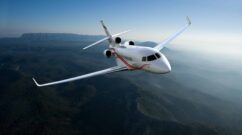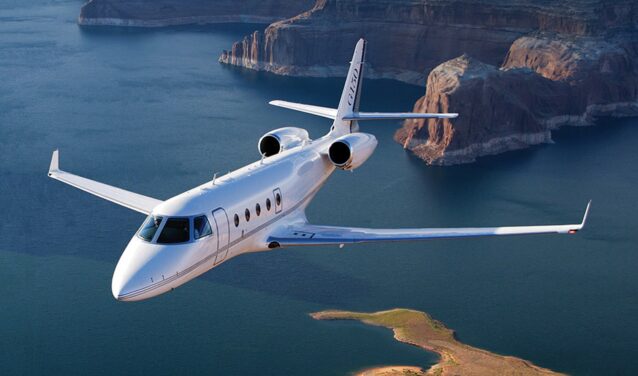How to buy a private plane?
You have set your heart on a private jet for sale and wish to purchase one? You want to buy a private jet but don’t know which one to choose? Are you curious about the formalities that airlines go through when preparing their sales contracts?
You’ve come to the right place. Right away, we give you all the answers and details on how to buy a private jet.
Which plane to buy?
The business aviation market has many opportunities to offer. Indeed, there is a multitude of aircraft meeting various needs: leisure flights, long distance flights, business flights… If you decide to buy a private jet, you will be spoilt for choice in terms of size, design, performance, technological equipment… It will therefore be essential to identify your needs beforehand to make the right choice. This is why we have identified the best aircraft on the market according to your needs:
Buying an aircraft for leisure ?
If you wish to buy a private jet for leisure, here are the main models you should think about:
Pilatus PC-12
The Pilatus PC-12, made in Switzerland, is a single-engine aircraft with an integrated propeller. Both safe and versatile, it provides the same safety standards as other turboprops in its class. The Pilatus PC-12 can land at more than 2,500 aerodromes in Europe, where a private jet or commercial aircraft could not land. It has the advantage of easy access to the short runways of Gstaad – Saanen, Lausanne, Arcachon Cap Ferret, Ile d’Yeu or Saint-Tropez la Môle.
Characteristics:
. Cruising speed: 464 km/h
. Maximum distance: 2090 km
. Cabin Size: 5.16 m length – 1.47 m height – 1.52 m width
. Category: Turboprop – 2 pilots with 6 passengers
New cost: from 3.36 million euros
Embraer Phenom 100
The Phenom 100 is a very light business jet produced by the Brazilian manufacturer Embraer. Its refined and elegant interior has been designed by BMW down to the last detail. It has large spaces for luggage and space for coats and computers.
Features:
. Cruising speed: 720 km/h
. Maximum distance: 2200 km
. Cabin Size: 3 m length – 1.37 m height – 1.40 m width
. Category : Very Light Jet (LVJ) – 2 pilots with 4/5 passengers
New cost: from 3.581 million euro
Buying a plane for business?
For business flights, discover aircraft with cabins offering the best working conditions:
Quote Mustang
With its 4 very comfortable VIP seats, the Citation Mustang is an excellent work tool. This ultra-light private jet is suitable for customers looking for a practical and very economical solution for their short-haul air travel.
Characteristics:
. Cruising speed: 630 km/h
. Maximum distance: 2160 km
. Cabin Size: 3 m length – 1.37 m height – 1.40 m width
. Category : Very Light Jet (LVJ) – 2 pilots with 4 passengers
New cost: 2.94 million euros
Quote XLS
The Citation XLS business jet is ideal for flights in Europe. Although it is of intermediate size, it can still access short or difficult mountain or seaside trails. It can accommodate up to ten passengers and has a very spacious hold.
Characteristics:
. Cruising speed: 805 km/h
. Maximum distance: 3600km
. Cabin Size: 5.79 m length – 1.65 m height – 1.70 m width
. Category: Intermediate Private Jet – 2 pilots with 10 passengers
New cost: 13 million euros
Buy a plane to travel in comfort?
Just like the CEOs of the CAC 40 or the greatest footballers, you can turn to more luxurious models:
Praetor 600
The Praetor 600 is a super-intermediate business jet that is particularly technologically advanced. It has a long range, allowing it to fly non-stop for up to 4,500 km and to make London-New York flights with ease.
Features:
. Cruising speed: 850 km/h
. Maximum distance: 4,500 km
. Cabin Size: 8.20 m length – 1.83 m height – 2.49 m width
. Category: Intermediate Private Jet – 2 pilots with 12 passengers
Cost of new buildings: 30 million euros
Praetor 600
Dassault Falcon 6X
Combining technical capabilities and luxurious design, the Falcon 6X will meet the expectations of the most demanding customers. It is ideal for medium and long-haul flights thanks to its Pratt & Whitney Canada PW812D engines, defying all competition in terms of power. Finally, it is equipped with a warm and quiet cabin, with modern styling and 100% customizable.
Features:
. Cruising Speed: 980 km/h
. Maximum distance: 10,186 km
. Cabin Size: 12.3 m length – 1.98 m height – 2.58 m width
. Category: Private long-haul jet – 2 pilots with 16 passengers
New cost: 38 million euros
Falcon 6X
Bombardier Challenger 850
The Challenger 850 has a sleek design and is powered by GECF34-3B1 engines that allow it to reach a top speed of 850 km/h (500 mph). This long-haul jet is appreciated for the unmatched comfort of its spacious cabin. It offers to the 16 passengers who can board various spaces: a kitchenette, several toilets…
Characteristics:
. Cruising speed: 850 km/h
. Maximum distance: 5000 km
. Cabin Size: 14.7 m length – 1.85 m height – 2.49 m width
. Category: Long haul jet – 2 pilots with 13/16 passengers
Cost of new buildings: 21 million euros
How do airlines prepare contracts?
The aircraft orders recorded each year are the result of long and tumultuous negotiations. These negotiations are binding on airlines and private jet manufacturers and can extend over several years. Indeed, these multi-million euro aircraft orders begin well before they are showcased at the Paris Air Show. As for the origin of these contracts, there are two options: either they come from an offer at the initiative of the aircraft manufacturers, or they are invitations to tender from the carriers.
Aircraft manufacturer-initiated bids
In this case, the approach is initiated by the aircraft manufacturer itself. Knowing the needs and locations of the airlines, the aircraft manufacturers will be able to make regular proposals to them.
Launching calls for tenders from carriers
The second option is to send “Requests For Proposal”, i.e. invitations to tender to manufacturers. A whole fleet plan is then defined in advance by the company to meet requirements in terms of quantity and type of aircraft over several years. For the largest orders, some airlines even provide fleet plans for the next 20 years. Several criteria are then taken into consideration: competitors’ fleets and projects, forecast traffic, profitability objectives, oil price trends, investment budget, etc. Also, if the aim is to complete its fleet with aircraft that are already well known or new models on the market, the approach will not be the same. For example, for a so-called “classic” aircraft, a simple framework contract will suffice. On the contrary, more recent models will require a more in-depth technical, commercial and financial study.
What are the assessment criteria for winning the contract?
Many criteria come into play, starting with the campaign. A central element is the evaluation of the aircraft’s performance, which includes engine quality and the number of engine manufacturers involved in equipping the aircraft. But that’s not all: other factors also have an impact, such as service and maintenance costs, delivery slots, aircraft availability per package, etc. Representing a major investment, most companies set up certain programs to reduce costs and acquire insurance. This is why some contracts can easily reach almost 600 pages.
How are prices negotiated?
But then how are the negotiations going? If some airlines like Ryanair will try by all means to lower costs, the manufacturer often remains the winner. Indeed, an order with an airline manufacturer will automatically be subject to a price variation formula. Also called “escalation formula”, this method consists in indexing price variations according to various parameters: price of labor, raw materials, oil… Thus, a decreasing economy of scale applies: the larger the fleet, the more expensive the order will be.
Another element on which air carriers create a margin: associated services. The main purpose of these services is the regulatory maintenance of the aircraft at different levels: ramp maintenance, aircraft structure, engines, equipment and components. These overhauls are spread out over time and classified into different categories. From category A for monthly maintenance to category D for maintenance to be carried out every 4/5 years, this element represents a real source of revenue to amortize manufacturer discounts. This sector, initially under the control of engine manufacturers, is experiencing strong growth and has recently been extended to manufacturers. The MRO (Maintenance Repair & Overhaul) market, under the French name Maintenance, Repair and Overhaul, is expected to grow by 20% by 2025.
How high are the discounts? What is the final price paid by the company?
Discounts vary according to the size and composition of the order. Depending on the type of aircraft ordered, the subject of the order, the size of the customer, the discount can vary between 40% and 55%. For very large aircraft orders such as the A380, this is a significant departure from the announced list price of $400 million. Although airlines very rarely pay this list price, it serves as a reference. For example, it is useful when it comes to calculating down payments. The first down payments made by the carrier when the order is placed remain very low, but they increase gradually. After a year and a half, this deposit is usually around 25% and it is only at the delivery stage that the entire balance is paid.
How do companies finance their orders?
The Airbus A350 and Boeing B787 mega-orders from companies like AirFrance KLM may seem impossible to finance. However, the major carriers have several strategic levers at their disposal to prevent them from going bankrupt.
Firstly, the current system of down payments allows airlines to finally spread costs over time. The full price is paid in full at the time of delivery, not at the time of order. In the immediate term, the company therefore does not pay much and thus benefits from a certain flexibility. Another important element is the use of leasing by airlines. For an airline operator, this strategy consists of leasing its aircraft to another company for an average period of 6 years. Air France would finance one third of its fleet in this way, as it is a technique that smoothes out operating costs considerably.






